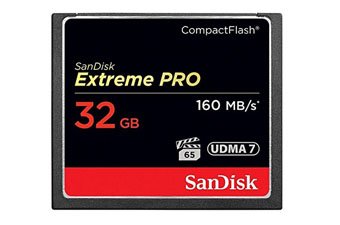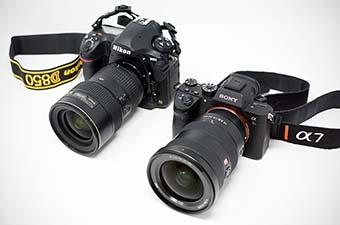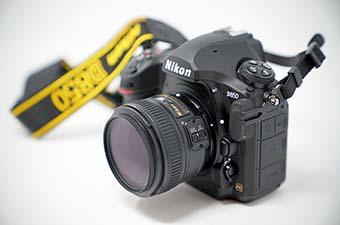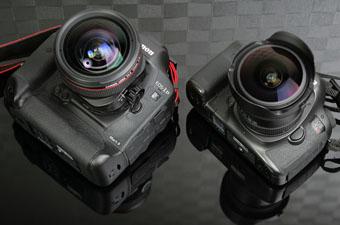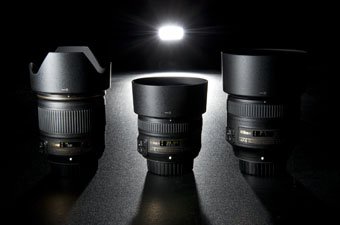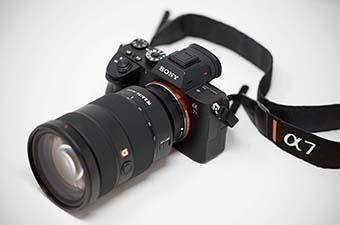The 5D Mark III is one Canon's leading full-frame DSLRs, featuring a 22.3-megapixel full-frame sensor and steller image and video quality. Given the powerful resolution of the 5D Mark III, it’s important to choose lenses that will maximize the potential of the camera. Below are our picks for the best lenses for the Canon 5D Mark III, from kit and wide angle to telephoto zoom (the majority are from Canon’s designated “L” Series, which represents the highest quality).
Canon 5D Mark III Kit Lenses
Canon 24-105mm f/4 L IS ($3,099 for the kit)
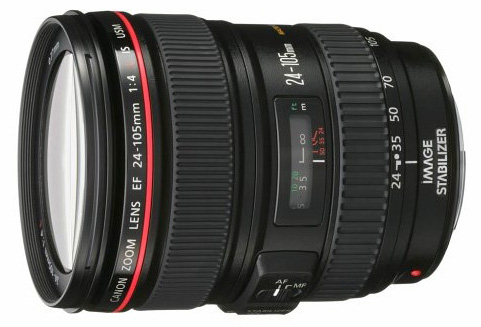 Weight: 23.7 oz.
Weight: 23.7 oz.
Maximum aperture: f/4
What we like: Versatility and value.
What we don't: Some distortion at the ends (particularly the wide end).
If you’re in the market for one walk-around lens for travel and portraits without breaking the back, the Canon 24-105mm f/4 L IS is a nice option. This lens is sharp throughout its zoom range, has image stabilization, and fast and accurate autofocus. We also like the very useful focal length range, which covers 24mm at the wide end for landscapes all the way to medium telephoto at 105mm for close-up portraits and head shots. Keep in mind that despite the versatility and image stabilization, this is a consumer lens and the maximum aperture of f/4 is limiting in terms of low light performance and bokeh. Professionals and others who want a walk-around and travel lens with superior optics should consider the Canon 24-70mm f/2.8 (below).
See the Canon 24-105mm Kit
Canon 24-70mm f/4 L IS ($3,249 for the kit)
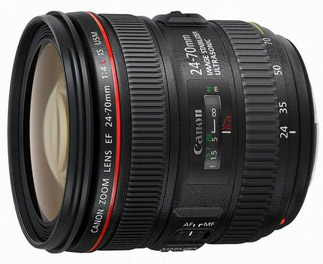 Weight: 21.2 oz.
Weight: 21.2 oz.
Maximum aperture: f/4
What we like: Sharp and versatile.
What we don't: Kit is overpriced compared to the 24-105mm kit above (and no, this isn’t the 24-70mm f/2.8).
Released in 2013, the Canon 24-70mm f/4 L IS is the second lens option to be offered in a kit with the 5D Mark III. Playing off the popularity 24-70mm f/2.8, the f/4 version is almost as sharp, considerably cheaper, and lighter due to more plastic in the build. For photographers who want a good travel and family lens on the cheap, this lens is an attractive option. However, the 24-70mm f/4 kit currently is a worse value than the 24-150mm kit: the later is more expensive as a standalone lens yet the kit is $150 cheaper. If the kit prices were reversed, you would have a tough choice on your hands. But as it stands now, we recommend saving with the 24-105mm and getting a longer zoom range to boot.
See the Canon 24-70mm Kit
Wide-Angle Lenses
Canon 16-35mm f/2.8L II ($1,449)
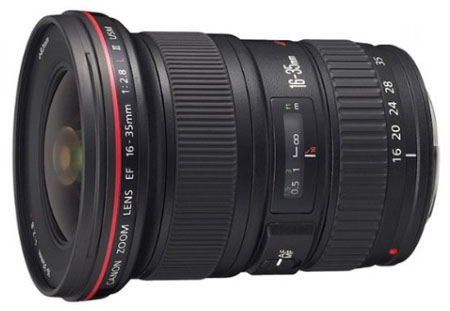 Weight: 22.4 oz.
Weight: 22.4 oz.
Maximum aperture: f/2.8
What we like: Sharp fast for a wide-angle zoom.
What we don't:
For the cheaper Canon 6D we recommend the f/4 version of this lens, but for 5D Mark III we are going with the f/2.8. This type of lens is why you spend $2,500 on a camera: it’s extremely sharp, impressive in low light for a wide-angle zoom, and focuses quickly in most circumstances. All things considered, this is go-to glass for many professional landscape photographers that want the versatility of a zoom with better optical performance than the slower f/4. It also makes a great complimentary lens to the 24-70mm f/2.8L II, although that is a rather expensive kit. Those on a budget or who shoot landscapes and other wide-angle shots infrequently should try the 16-35mm f/4.
See the Canon 16-35mm
Canon 14mm f/2.8 L ($2,099)
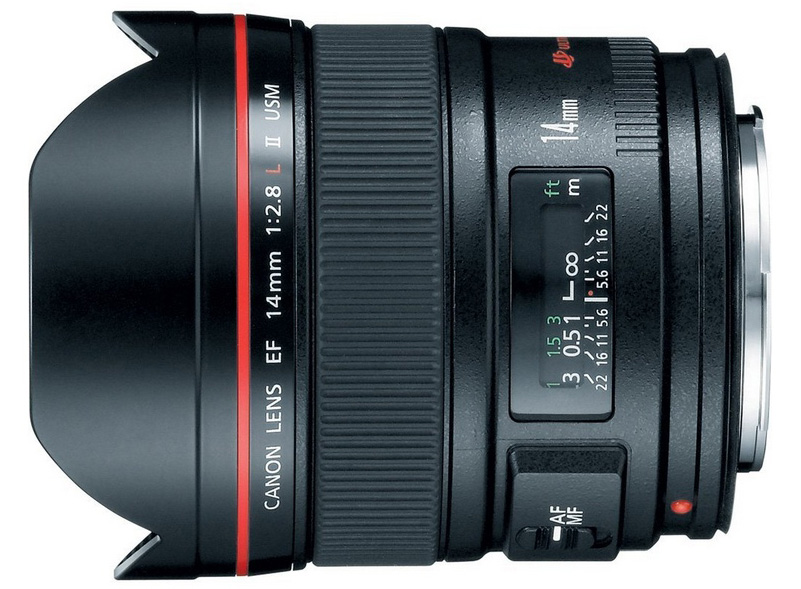 Weight: 22.8 oz.
Weight: 22.8 oz.
Maximum aperture: f/2.8
What we like: Minimal distortion.
What we don't: The steep price tag.
The 14mm f/2.8 L is Canon’s finest ultra-wide-angle lens. With superb optics and almost no distortion, the lens is ideal for professional photographers and enthusiasts who shoot architecture or ultra-wide-angle landscape photography. Keep in mind that 14mm is a challenging focal length—the majority of people will get more and better use out of a more versatile lens like the Canon 16-35mm above. But for the best of the best in an ultra wide, this is it.
See the Canon 14mm
Canon 17-40mm f/4 L ($749)
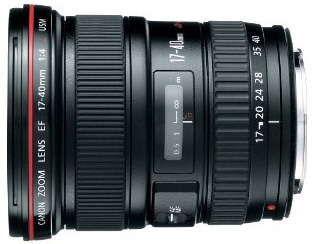 Weight: 16.8 oz.
Weight: 16.8 oz.
Maximum aperture: f/4
What we like: Versatile and a great value.
What we don't: Softness at lower apertures, no image stabilization.
For those who want to save on a wide-angle lens, the Canon 17-40mm f/4 L is one of the best values on this list. When shooting in decent light, the lens is sharp, focuses well, and covers a variety of focal lengths for landscapes and other wide-angle photography. It’s also considerably cheaper and lighter than the Canon 16-35mm above. The biggest downsides of the Canon 17-40mm are its maximum aperture of f/4 and the fact that it doesn’t have image stabilization.
See the Canon 17-40mm
Zeiss 21mm f/2.8 Distagon ($1,299)
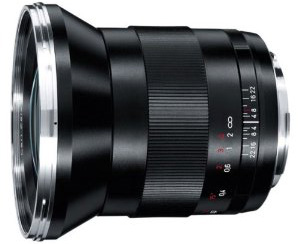 Weight: 21.2 oz.
Weight: 21.2 oz.
Maximum aperture: f/2.8
What we like: Exceptional optics.
What we don't: Weight.
Carl Zeiss makes some of the finest lenses on the market, and the manual focus Zeiss 21mm f/2.8 Distagon is the world’s best wide-angle lens. Manufactured with mounts for both Canon and Nikon, the Zeiss 21mm is extremely sharp all the way to the corners and has almost no distortion. It is bulky for a prime lens but the optics are unrivaled and it’s the choice lens of many professional landscape photographers.
See the Zeiss 21mm Distagon
Walk Around and Portrait Lenses
Canon 24-70mm f/2.8 L II ($1,749)
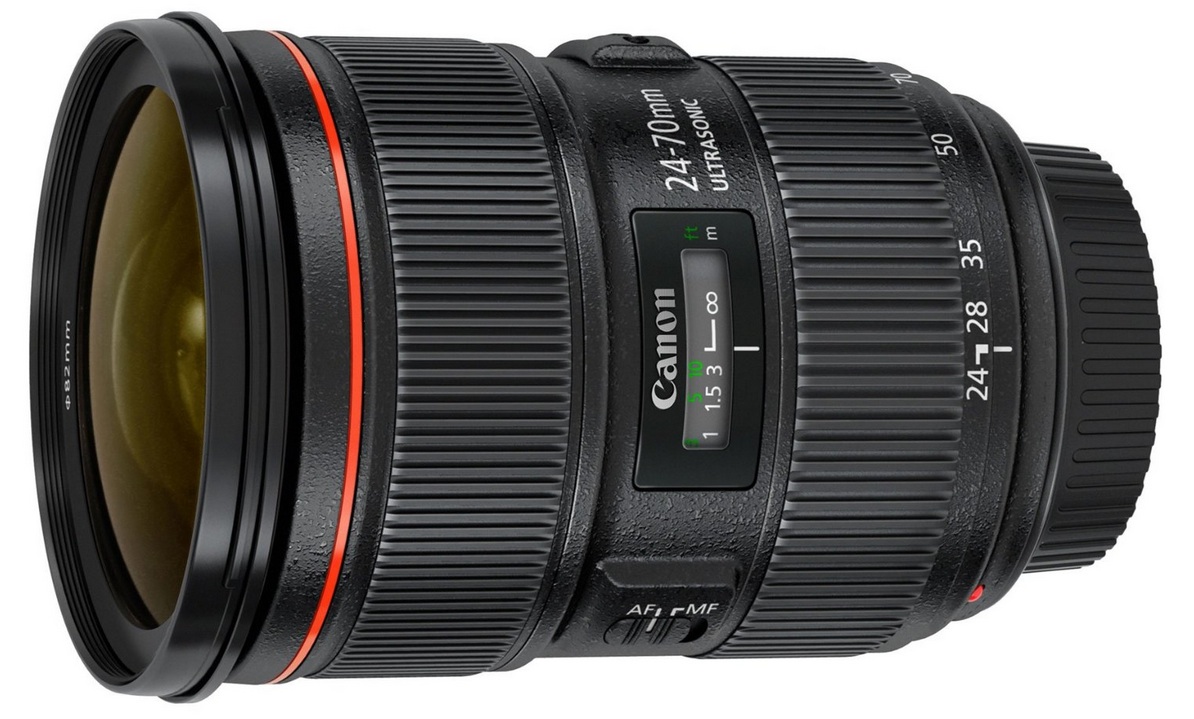 Weight: 28.3 oz.
Weight: 28.3 oz.
Maximum aperture: f/2.8
What we like: Versatility.
What we don't: Some distortion at the ends, weight.
The 24-70mm f/2.8 L II is Canon’s leading mid-range zoom and one heck of a lens. It's versatile with a zoom range that covers focal lengths from landscapes to portraits, extremely sharp, and has fast and accurate autofocus. For travel and as a walk-around lens, the Canon 24-70mm f/2.8 is the choice of professionals and discerning enthusiasts and captures spectacular images on the Canon 5D Mark III. However, there are some shortcomings to consider: the lens is heavy at nearly 30 ounces and doesn’t come with image stabilization (you won’t need it nearly as often as with an f/4 lens). But compared to either of the kit lenses or the 24-70mm f/4, this lens represents a significant step up in quality.
See the Canon 24-70mm
Sigma 35mm f/1.4 Art ($899)
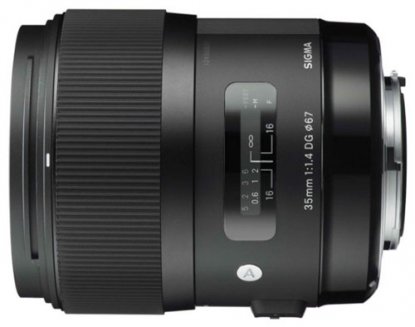 Weight: 23.5 oz.
Weight: 23.5 oz.
Maximum aperture: f/1.4
What we like: A super fast prime lens on a budget.
What we don't: Heavy and autofocus can be finicky.
As one of our favorite third-party lens builders, Sigma brings to the table unique lenses that sometimes are cheaper than Nikon’s native offerings. In this case, the 35mm f/1.4 “Art” lens is fast, sharp, and a great value at around $900. What do you sacrifice? Autofocus can be slower than Nikon and you don’t get quite the same build quality (although this Sigma lens is pretty well made). You also may have to fine tune the focus upon receiving the lens, which isn’t optimal for some people. We still like the Nikon 35mm f/1.4, but that version is nearly double the price and heavier. We give kudos to Sigma for innovating with the Art series and becoming even more competitive with the top brands.
See the Sigma 35mm
Canon 50mm f/1.4 ($329)
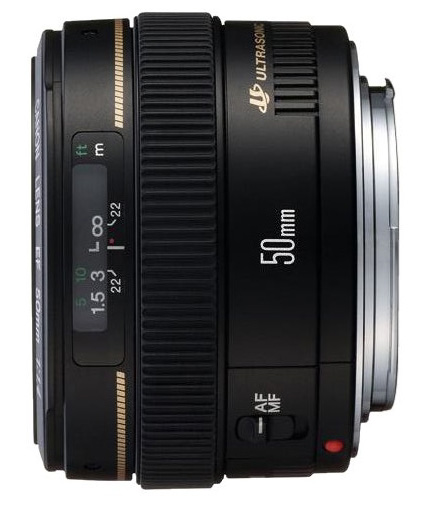 Weight: 10.3 oz.
Weight: 10.3 oz.
Maximum aperture: f/1.4
What we like: Low cost, weight.
What we don't: Some softness at smaller apertures.
Canon makes two 50mm lenses for full-frame cameras: one with a maximum aperture of f/1.4 and the other with a maximum aperture of f/1.2. The latter is slightly sharper and even better in low light, but is extremely expensive at over $1,400. Professional photographers who depend on the 50mm focal length may prefer the f/1.2 version, but for most people we recommend the Canon 50mm f/1.4—it’s an outstanding lens and a great value.
See the Canon 50mm
Telephoto Zoom Lenses
Canon 70-200mm f/4 L IS ($1,099)
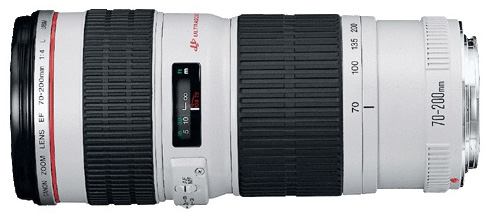 Weight: 26.9 oz.
Weight: 26.9 oz.
Maximum aperture: f/4
What we like: Versatility.
What we don't: Weight.
There are two versions of Canon’s 70-200mm lens: the 70-200mm f/4 and the 70-200mm f/2.8. If you need the extra low light capability, go with the f/2.8. Otherwise, the f/4 L IS is about half the price and half the weight. Both versions of the Canon 70-200mm lens have excellent optics and come with image stabilization.
See the Canon 70-200mm IS
Canon 70-300mm f/4-5.6 L IS ($1,349)
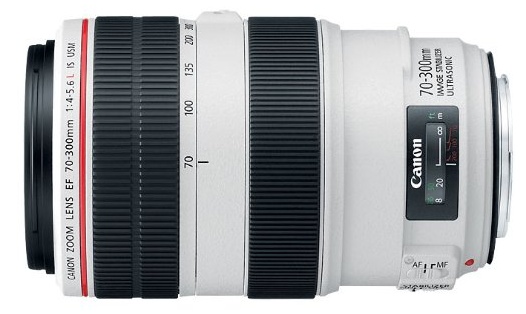 Weight: 37 oz.
Weight: 37 oz.
Maximum aperture: f/4
What we like: Versatility.
What we don't: Weight.
The Canon 70-300mm f/4-5.6 L IS boasts an impressive zoom range and great optics. The lens’s low light performance is fine for most circumstances—it has a maximum aperture of f/4 and image stabilization—but those who frequently shoot in low light should consider the Canon 70-200mm f/2.8. Otherwise, the Canon 70-300mm is a great choice for a telephoto zoom.
See the Canon 70-300 IS
Canon 5D Mark III Lens Comparison Table
| Lens | Price | Type | Aperture | Weight | IS | Filter |
|---|---|---|---|---|---|---|
| Canon 24-105mm f/4 L IS USM | $3,099 | Kit | f/4 | 23.7 oz. | Yes | 77mm |
| Canon 24-70mm f/4 L IS | $3,249 | Kit | f/4 | 21.6 oz. | Yes | 77mm |
| Canon 16-35mm f/2.8 L | $1,449 | Wide angle | f/2.8 | 22.3 oz. | No | 82mm |
| Canon 14mm f/2.8 L II | $2,099 | Wide Angle | f/2.8 | 22.8 oz. | No | N/A |
| Canon 17-40mm f/4 L | $749 | Wide angle | f/4 | 16.8 oz. | No | 77mm |
| Zeiss 21mm f/2.8 Distagon | $1,299 | Wide angle | f/2.8 | 21.2 oz. | No | 82mm |
| Canon 24-70mm f/2.8 L | $1,749 | Walk around/portrait | f/2.8 | 28.3 oz. | No | 82mm |
| Sigma 35mm f/1.4 Art | $899 | Walk around | f/1.4 | 23.5 oz. | No | 67mm |
| Canon 50mm f/1.4 | $329 | Walk around/portrait | f/1.4 | 10.3 oz. | No | 58mm |
| Canon 70-200mm f/4 L IS | $1,099 | Telephoto | f/4 | 26.9 oz. | Yes | 67mm |
| Canon 70-300mm f/4-5.6 L IS | $1,349 | Telephoto | f/4-5.6 | 37 oz. | Yes | 67mm |
Our Dream Camera Bag for the Canon 5D Mark III
Canon’s EF-mount lens collection is pretty impressive, so it’s hard to go wrong. For those who aren’t professionals and intend to use the 5D Mark III for travel and portraits, the Canon 24-105mm f/4 L kit is a good option. You’re only spending $600 more for the kit than you would for the camera body alone, and it gives you a wide range of focal lengths for everything from landscapes to portraits. It’s a great travel lens as the vast majority of my shots on the road are less than 105mm. We would pass on the 24-70mm f/4 kit, which is $250 more expensive than the 24-105mm and has less range. Pros love the Canon 24-70mm f/2.8 L II, which is pricey but you can’t beat the optics for a walk-around zoom.
If you plan on shooting landscape photography frequently, I would pick up the Canon 16-35mm f/2.8 L IS. It’s extremely sharp, great in low light for a wide-angle zoom, and can create the bokeh that you just won’t get from a slower f/4. For people photos, the Canon 50mm f/1.4 almost is a must buy. It’s inexpensive, sharp, produces great bokeh, and is just a fun lens to have in your bag.
For a telephoto zoom, I would get the Canon 70-200mm f/4 L IS. It’s a bit awkward looking and the image stabilization motor hums pretty loud, but the results are impressive for the price. I carried this lens in Nepal on a trek around Manaslu, and pulled it out at around 5am when almost everything was dark except for the mountain. This image is hand held and very few of the other shots had blur or focus issues.
Zoom Lenses vs. Prime Lenses
In the zoom vs. prime debate, prime lenses generally are faster, lighter, and have less distortion. Zoom lenses are much more versatile by covering a range of focal lengths instead of just one. It used to be that professionals depended heavily on prime lenses while amateurs used zooms, but the gap is closing as Canon and other lens manufacturers continue to improve the optical performance of their zoom offerings.
If you’ve purchased the 5D Mark III camera body without a kit lens, you’re starting from scratch and have a bigger incentive to favor targeted primes. If not, starting with the 24-105mm f/4 L IS makes a lot of sense for only $600 more. We may not pick this lens in particular without the substantial discount, but it’s a versatile starter option with a very useful focal length range (the upside of zooms).
The truth is that many professionals with use a combination of zooms and prime lenses. The Canon 28-70mm f/2.8 is the classic pro zoom that produces outstanding images and can stay on your camera most of the time. And you can add a couple of prime lenses at the focal lengths you shoot most for even better optical performance. Telephoto zooms are a useful lens to have in your bag no what type of photography you shoot, although some pros use prime telephoto lenses if they know the exact focal length they need.
Canon’s “L” Designation
Canon’s elite full-frame lenses receive the “L” designation, and have a thin red band around the barrel. Many (but not all) are weather resistant and have high quality elements lens including ultra-low dispersion glass. The L series is dominated by lenses that are f/2.8 and faster, but Canon has stretched it a bit to include models like the 24-105mm f/4 USM and 24-70mm f/4 (both kit lenses sold with the 5D Mark III).
All in all, Canon has done a great job marketing the L Series and consumers clearly seek lenses of this type. We wish the definition was more universal—perhaps all L lenses should be weather sealed—but it does give you a good idea of where you stand with a purchase. And don’t be afraid to buy non-L Series lenses either. The 85mm f/1.8, for example, is a terrific full-frame lens but isn’t part of the L Series, and some more questionable lenses are.

